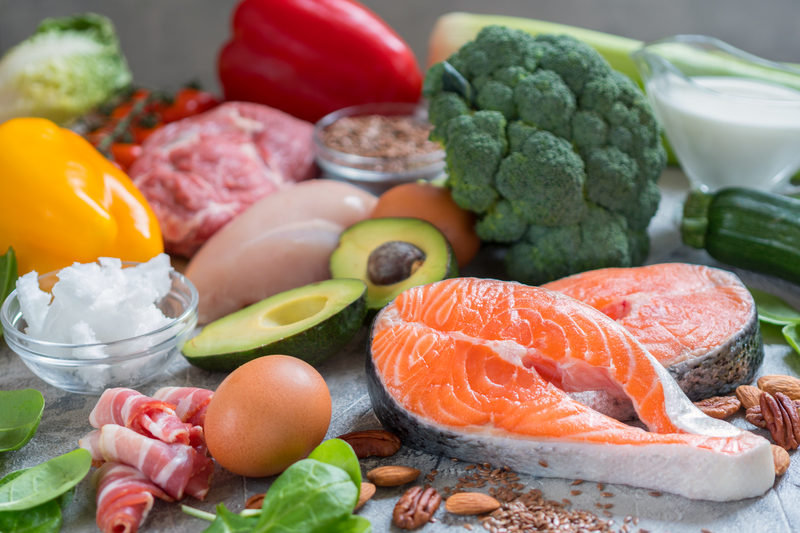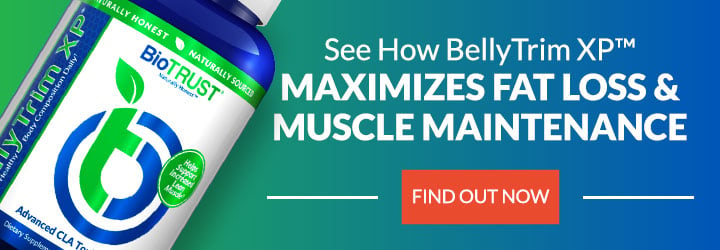Everything You Need to Know About the Slow-Carb Diet

Dude, no carb is hard—really hard—and to be completely honest, going to that extreme for any consistent, substantial period of time is unnecessary for most people. Even though going super-low-carb is the trendy thing to do, ditching carbs may not be the best—or healthiest—choice. A better option may be the Slow-Carb Diet, which creator Tim Ferriss claims is 8 times easier to follow than the fashionable (yet rather extreme) ketogenic diet and can lead to 20 pounds of fat loss in 30 days…without doing any exercise.
Sounds awesome, right? But what the heck is the Slow-Carb Diet? What foods can you eat? What can’t you eat? Find out everything you need to know about the Slow-Carb Diet below!
Slow-Carb Diet Cornerstone: Simplicity is Key
The Slow-Carb Diet is the brainchild of Tim Ferriss—American podcaster, author, entrepreneur, and biohacker extraordinaire—who introduced the world to this approach to rapid fat loss on his blog in 2007. It was also featured in his book The 4-Hour Body, published in 2010, which is when it really seemed to gain popularity. 1
Ferriss said, “This is the only diet besides the rather extreme Cyclical Ketogenic Diet (CKD) that has produced veins across my abdomen, which is the last place I lose fat.” Speaking of Keto, which Ferriss has talked about extensively on his extraordinary, highly-rated podcast The Tim Ferriss Show, and he even intermittently dips into ketosis—but not using the ketogenic diet. Instead, he uses tools like periodic fasting and MCTs.
For 90% of folks, Ferriss recommends the Slow-Carb Diet. Keto, on the other hand, is a tool that he recommends using only in very specific situations. While he estimates that less than 10% of people who try a ketogenic diet successfully stick with it for even the first month, Ferriss says the Slow-Carb Diet has an 80% compliance rate.
And when you stick with it, you can see rapid results. In fact, Ferriss has been quoted as saying that the Slow-Carb Diet is a recipe to “lose 20 pounds in 30 days without exercise.” In his own personal journey with the Slow-Carb Diet, Ferriss cut from 180 to 165 pounds—in just six weeks—while adding about 10 pounds of muscle.
Ferriss’ “n = 1” experiment aside, thousands of people have reportedly used the Slow-Carb diet to successfully lose fat. While the Slow-Carb Diet hasn’t been studied as rigorously as something like the Mediterranean diet, the Quantified Diet Project sheds some light on the effectiveness of this eating plan. 2
3,500 people enrolled in the online-based study, and after 4 weeks of following the Slow-Carb Diet, 84% of the finishers lost weight, with an average weight loss of 8.6 pounds. What’s more, 14% of people lost more than 14 pounds.
What makes the Slow-Carb Diet so effective? Better question, what makes the Slow-Carb Diet so easy? It comes down to a handful of simple, clear rules…
The Rules to the Slow-Carb Diet
Rule #1: Don’t Eat Any “White” Carbs
The first rule of the Slow-Carb diet is to avoid anything—particularly carbs—that’s white or can be white. This means NO bread (or any grains for that matter), potatoes, cereal, pasta, rice (of any color actually), cheese, tortillas, fried food with breading, and of course, sugar. Ferriss does offer one caveat to this rule: These foods are prohibited except within 30 – 90 minutes after a challenging resistance-training workout (that lasts at least 20 minutes).
Arguably, the basis for the avoid “white” carbs rule comes from the preponderance of research that suggests that consumption of refined grains and added sugar is linked to “you-name-it” chronic disease (of which, obesity is certainly one), which some researchers have dubbed “death by carbs.” 3,4 By sticking to this rule, you eliminate an enormous category of problematic, heavily processed junk foods.
There’s no question you could make a case that many of these white foods—such as minimally processed whole grains, properly prepared potatoes, certain cheeses, and rice—could be included as part of a healthy diet. Heck, a recent study published in the Lancet provided compelling evidence that higher intakes of dietary fiber and whole grains were closely related to lower bodyweights and reduced incidence of “fill-in-the-blank” non-communicable disease. 5
But, this is about the Slow-Carb Diet, not my opinion. Moving on…
Rule #2: Keep the Menu Simple
This is my favorite rule of the Slow-Carb Diet because it highlights one of the most-overlooked aspects of highly effective diet plans: Eat the same few meals over and over again.
Limiting dietary diversity, or dietary variety, is one of the secrets from the most successful dieters. 6 On the flipside, increased dietary variety is usually a surefire way to increased caloric intake and override internal signals of satiety.
This is, in part, why it’s so easy to overeat at parties and buffets where there’s endless variety. This is also why the old saying “everything in moderation” is not the best dietary advice. 7
Another advantage of eating the same meals over and over? Lower decision fatigue. In other words, you can make it easier to stick to your plan by limiting how many decisions you have to make.
Ever get to that point later in the day when it comes time to decide what’s for dinner, and instead of preparing a healthy home-cooked meal, you grab whatever is most convenient, which is usually not the healthiest option? That’s decision fatigue.
You swing the odds in your favor by making decisions (and those “default” meals) ahead of time. Along those lines, this works hand-in-hand with easier, more efficient meal planning and meal prep. And as an added bonus, it also makes grocery shopping considerably easier. Don’t worry, you still have many options.
Rule #3: Have a Weekly Cheat Day
As Ferriss says, “Have one day a week where you go crazy; eat whatever you want.” We’ve talked a lot about cheat days before, and they may have both psychological and physiological benefits.
On one hand, taking a weekly “diet break” may increase compliance, and if you can stick to your diet plan, you’re more likely to get better results. 8 In other words, it may make it easier to stick to the rules the rest of the week if you know you can eat whatever you want once a week.
On the other hand, recent research shows that “diet breaks” and “cheat days” may actually improve fat-loss results over the long haul. 9,10 It’s hard to say whether this is due to a metabolic advantage, so to speak, or if it just comes down to compliance.
Of course, intermittent fasting—in particular, alternate-day fasting—is another example of intermittent caloric restriction that has shown tremendous fat-loss promise as an alternative to the old-school approach of daily caloric restriction.
Either way, this rule basically means you can have your cake and eat it too!
Rule 4: Do NOT Drink Your Calories
The crux of this rule is to make sure you’re not drinking things like sodas, soft drinks, fruit juices, milk, coffee/espresso drinks, and alcohol. There are probably a few reasons for this rule. First, most of these liquid calories are empty, meaning they provide no nutritional value.
Secondly, sugar-sweetened beverages (like soda and fruit juice) violate rule #1—they contain sugar. Along these lines, consumption of sugar-sweetened beverages is linked to weight gain.
Additionally, liquids are digested much more quickly than solids, and they can lead to a sharper increase in blood sugar compared to whole foods. What’s more, liquids don’t tend to be as satisfying or filling as whole foods—even when calorie content is identical. 11,12
Instead, you’ll drink plenty of water on the Slow-Carb Diet, as well as unsweetened tea, coffee, and other no- and low-calorie beverages. Admittedly a wine fanatic, Ferriss does say that red wine (no more than one to two 5-ounce glasses per night) is allowed, but not necessary. He makes it clear that the exception to the rule is only red wine—not white wine or beer, which should be avoided on the Slow-Carb Diet.
Another exception to the rule: Protein shakes, which Ferriss says you can, particularly in the morning. Speaking of which…
Rule #5: 30 in 30
Generally speaking, the Slow-Carb Diet is a higher-protein diet, which offers a metabolic advantage when it comes to fat loss, and Ferriss typically recommends eating at least 20 grams of protein at each feeding. What stands out, however, with the Slow-Carb diet is that Ferriss suggests consuming 30 grams of protein within 30 minutes of waking up.
Research has shown that a higher-protein breakfast can be an effective strategy for fat loss. As a matter of fact, a number of studies have found that consuming a high-protein breakfast (with at least 30 grams of protein) may be a useful strategy to increase satiety, reduce hunger, improve appetite control, reduce snacking, reduce cravings, improve diet quality, reduce food motivation and reward, reduce caloric intake, and support healthy weight management. 13, 14, 15, 16, 17
While Ferriss is a big advocate of eggs, if you’re strapped for time, he suggests a whey protein shake. Research has also shown that consuming whey protein at breakfast can improve glycemic balance, reduce hunger, and over time, lead to significant weight loss. 18
Rule #6: Don’t Eat Fruit
Even though we’d say that fruits can (and should) be included as part of a long-term healthy diet plan, the Slow-Carb Diet bans fruits (except on cheat days). Ferriss says that humans aren’t meant to eat fruit seven days a week. What’s more, he argues that fructose in fruit may impair fat loss. The only exceptions to the no-fruit rule are tomatoes and avocados.
Bonus Slow-Carb Diet Rules
- Don’t worry about counting calories
- Eat slowly
- Ferriss recommends eating 4 times per day, but meal frequency is up to you
What You CAN’T Eat on the Slow-Carb Diet?
- Bread
- Potatoes
- Cereal
- Pasta
- Tortillas
- Rice (all types/colors)
- Corn
- Fried food (with breading)
- Other grains
- Sugar
- Dairy (milk, cream, cheese, yogurt)
- Fruit
Ferriss’ Rule: If you have to ask if it’s allowed, don’t eat it. “Just remember: This diet is, first and foremost, intended to be effective, not fun.”
What Can You Eat on the Slow-Carb Diet?
- Lean meat and poultry
- Chicken breasts and thighs
- Beef (preferably grass-fed)
- Pork
- Seafood and fish
- Eggs
- Legumes
- Black, pinto, and red beans
- Peas
- Lentils
- Vegetables
- Dark green leafy veggies (like spinach)
- Cruciferous vegetables (broccoli, cauliflower, etc.)
- Sauerkraut and kimchee
- Asparagus
- Green beans
- Nuts and seeds
- Coffee (unsweetened)
- Tea (unsweetened)
- Red wine (max 1 – 2 glasses per day)
Sample Slow-Carb Diet Meal Plan
- Breakfast:
- 2 eggs, lentils, and sautéed spinach
- 3 eggs with 3 slices Canadian bacon and sautéed kale
- Spinach or broccoli frittata
- Whey protein shake and lentils
- Lunch:
- Cobb salad with mixed greens, chicken, bacon, egg, and avocado
- Burrito bowl with beans, guacamole, veggies (no rice)
- Lentil stew
- Beef and bean chili
- Dinner:
- Protein + veggie + fats
- Roasted chicken with Brussels sprouts
- Roasted pork loin with spinach salad
- Shredded meat and cauliflower rice
- BONUS: wine
Ready to Get Started?
So, there you have it, the nuts and bolts of the Slow-Carb Diet. If you’re ready to give it a try, Ferriss recommends committing to the diet for a solid two weeks. At that point, you can see how it’s working for you. If you’ve tried the Slow-Carb Diet or if you have any questions, we’d love to hear from you. Simply share your comments below!








